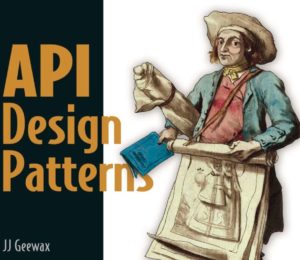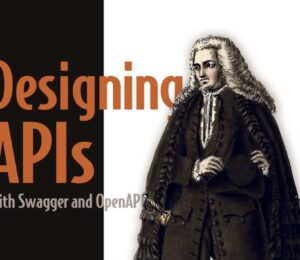Book Review: Mastering the Java Virtual Machine
- October 18, 2024
- 16434 Unique Views
- 4 min read
Otávio Santana's "Mastering the Java Virtual Machine" takes readers on an insightful journey through the inner workings of the JVM. As I read this book, I found myself reconnecting with the fundamentals of Java programming while also discovering new depths of understanding.
The book strikes a perfect balance between nostalgia and innovation. It reminded me of my early programming days, while also introducing cutting-edge concepts that are crucial for modern Java development. Santana uses clever technical metaphors to make complex JVM internals more accessible, bridging the gap between theory and practical application.
For both new and experienced developers, this book offers valuable insights:
- This book provides a comprehensive look at JVM architecture and performance optimization.
- This book allows seasoned developers to revisit core concepts with a fresh perspective.
- This book introduces newcomers to the intricacies of the Java platform in an approachable way.
As we explore the details of "Mastering the Java Virtual Machine" in this review, prepare to enhance your understanding of Java, challenge your existing knowledge, and gain practical skills for optimizing JVM performance.
Title: Mastering the Java Virtual Machine
Author: Otávio Santana
Genre: Technical Fiction

Mastering the Java Virtual Machine
Summary of Each Section
Part 1: Understanding the JVM
In Chapter 1, he primarily discussed the evolution of Java, introduced the JVM, and explained how the JVM works internally.
In Chapter 2, he explained how to decode class files, understand class file headers, fields and data repositories, and use Java class file methods.
- In the Java Virtual Machine (JVM), developers consider class file structure critical, which leads to byte code dancing, constant pools, and class loading.
- While decoding class files, he explains the conversion of Java Source -> Java Compiler -> Class file, where the Class File structure contains important details magic, Minor Version, Major Version, Constant Pool Count, Access Flags, Interfaces, Fields, Methods, and Attributes.
- He also explains how the class file structure encapsulates vital information about the return types, access modifiers, and parameters, which guides the JVM to execute code dynamically and efficiently.
In Chapter 3, he explores Bytecode, Arithmetic Operations (Addition, Subtraction, Multiplication, and Division), Value Conversions, Object Manipulation, and Conditional Instructions in depth.
- ByteCode Instructions demonstrate how arithmetic and comparison operations function properly, how various method calls perform datatype conversions, and how the JVM coerces objects for Set and Get fields. The JVM primarily operates within two fundamental categories: 1. Primitives; 2. Reference Values.
Part 2: Memory Management and Execution
One of the most important aspects for developers and architects is optimizing the application's memory management.
In Chapter 4, he explains the foundations of executions, discusses various system operations layers involved (Like Applications, System Operations, Instruction Set Architecture, and Hardware), decodes JVM execution which he discussed about steps involved for execution, covers Just-In-Time (JIT) compilations, and unravels Class Loading concept.
In Chapter 5, he enthralled readers with very important topics such as how memory management in the JVM affects the entire lifecycle of the Java Application, including memory components like the Method Area, Heap, Java Stacks, PC Registers, and native method stacks.
In Chapter 6, he provided readers with an overview of garbage collections and algorithms, explaining how they work, the differences between algorithms, how we can configure GC for our applications, and recommending correct algorithms and configurations. And also discusses JVM tuning and ergonomics for achieving optimal performance.
Part 3: Alternative JVMs
In Chapter 7, he explains how achieving performance and efficiency through Oracle Labs' new architecture, GraalVM, is important. He highlights its features and clarifies the role of JVM internals.
- When developers create cloud-native applications, they must optimize applications for efficient memory and resource utilization, especially during compilation.
- By leveraging GraalVM's transformative capabilities, you can learn to create Native Images with a high-performance compiler and understand the relevance of the AOT compiler.
In Chapter 8, he explores the gallery of the great JVM ecosystem and alternative JVM implementations, highlighting their significance in various use cases such as Eclipse J9, Amazon Corretto, Azul Zulu and Zing, IBM Semeru, and Eclipse Temurin, before he moves on to JVM vendors and SDKMan.
Part 4: Advanced Java Topics
In Chapter 9, he explains the importance of Java Framework Principles and how they contribute to API Design, the preference for convention over configuration, and the importance of documentation and testing. Furthermore, he discusses how these principles help developers create robust, tailor-made frameworks that embrace Java Standards and Best Practices.
In Chapter 10, he discusses the importance of the Reflection API tool, which enables developers to access the inner workings of Java programs. He also explains the role of reflections in Dependency Injection (DI) Containers, Object Relational Mapping (ORM), testing frameworks, serialization and deserialization libraries, and Dynamic Proxies tools. These tools allow developers to create objects at runtime, implement one or more interfaces, and interpret method invocations.
In Chapter 11, he captivated readers by showcasing the art of code generation, from annotated classes to dynamic metadata, using the Java Annotation Processor to demonstrate the transformative power of automation.
In the final chapter, Chapter 12, the author focuses on topics such as the JVM landscape, how to navigate the system operation architecture, and how to become a master of garbage collection. Finally, he explains the importance of the Virtual Threads feature introduced in JDK 21, as well as the distinction between platform threads and virtual threads.
Conclusion
"Master the Java Virtual Machine" offers an unparalleled deep dive into the JVM's inner workings. Its comprehensive coverage of both foundational concepts and cutting-edge features makes it an invaluable resource for Java developers looking to elevate their understanding and skills.
The book excels in:
- Providing a clear progression from basic to advanced topics
- Offering practical insights that directly apply to real-world Java development
- Covering emerging technologies and trends in the Java ecosystem
By mastering the concepts presented in this book, developers will be better equipped to:
- Write more efficient and performant Java code
- Debug complex issues at the JVM level
- Make informed decisions about JVM configuration and alternative implementations
- Leverage advanced features like reflection and code generation using Java Annotation Processor effectively
Recommendation
I strongly recommend that whether you're a novice, experienced, or seasoned Java developer, you read the book "Master the Java Virtual Machine." It will certainly help you enhance your knowledge of JVM internals, and after reading this book, you'll definitely notice a significant difference in your understanding of the JVM.
Don’t Forget to Share This Post!









Comments (1)
Andrii
1 year agoThanks 👍